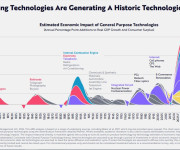Finding the Humane in Artificial Intelligence

Putting a Human Face on AI
Developers have been trying to add a human facade to next-gen AI ever since the introduction of the Watson supercomputer. Popular on account of its stellar performance on the hit game show, Jeopardy, IBM’s Watson device competed against two past Jeopardy champions — and won.
For many, this was their introduction to AI and some of the possibilities of next-gen technology. It also came with a natural, human-like disposition already attached. What viewers didn’t see were the countless hours of research and development that went into IBM’s Watson — or the endless work that’s still happening today.
To put it in simpler terms: AI is still in its earliest stages of development. While today’s systems are perfectly capable of formulating thoughts, learning from mistakes, performing research and much more, they’re nowhere near their potential.
Overcoming the Roadblocks
Perhaps the biggest bottleneck to the widespread integration of AI is the general lack of consumer acceptance. Some social circles and niches praise AI, but many are still reluctant. Citing concerns that AI-powered robots will replace jobs — especially in manufacturing, production and heavy industry — they see no reason to embrace the new technology.
Many professionals, including award-winning author and CEO of Not Impossible Labs, Mick Ebeling, want to change their minds. Mick, who lives by the mantra of “Commit — then figure it out,” is a huge supporter of “Technology for the Sake of Humanity.”
He’s also done a lot to help AI gain traction around the world. Mick has led multiple philanthropic efforts and developments in the area of AI, including efforts to restore an ALS patient’s voice and returning a paraplegic artist’s ability to draw. He also headed Project Daniel, which featured the world’s first 3D-printed prosthetic lab while outfitting Sudanese amputees with replacement limbs.
Not only do these efforts help to bridge the gap between humanity and AI, but they’re really just the beginning of what next-gen AI has to offer.
Finding Friends in Big Places
The task of humanizing AI isn’t left up to Mick Ebeling and his staff alone. Companies like Google, Microsoft and Amazon have all recently embraced AI through various efforts, many of which revolve around machine learning technology. This benefits big business and modern industry in many ways, including:
- Greater production capacities and lower material consumption. Today’s smart machines are already using predictive data analytics and machine learning to increase production by up to 20% while reducing overall material consumption by 4%.
- Delivering relevant data throughout the supply chain. Not only does AI and machine learning pump the supply chain full of accurate, relevant data, but it’s automatically applied and disseminated across multiple departments and teams.
- Improving maintenance, repair and overhaul — MRO — via targeted preventative maintenance. Nearly all of the major cloud platforms support machine learning through integrated databases, apps, services and algorithms. Not only does this improve maintenance, repair and overhaul, but it also increases overall equipment effectiveness — OEE — as high as 20% in some cases.
But the benefits of machine learning aren’t limited to professionals. Some of us already benefit from machine learning without even knowing it — and there’s much more to come. Many mainstream consumer products feature machine learning, including:
- Virtual personal assistants and apps. Devices like Amazon’s Alexa, Apple’s Siri and Google Assistant represent a huge breakthrough in bridging the gap between humans and AI.
- Enhanced GPS services. Basic GPS navigation has been around for decades, but many systems are being upgraded and outfitted with next-gen technology. New devices can predict traffic patterns, plan routes with greater accuracy and much more.
- Home security and surveillance. While these systems were once reserved for businesses and luxury estates, modern technology has made home surveillance more affordable than ever before. If this wasn’t enough, the integration of AI and machine learning lets these systems recognize known offenders and, in some cases, detect crimes before they even happen.
These are just a few of the smart products and devices on the consumer market today. Google is also exploring a new project known as PAIR — or People plus AI Research — to explore new applications in the workplace and throughout everyday life. As developers continue to push the boundaries of technology, including AI and machine learning, we’ll see systems with more features and enhanced sophistication.
Can Humanity and AI Co-Exist?
In short, the answer is yes — humanity and AI can co-exist. There are some challenges to face and roadblocks to overcome before we see widespread acceptance, but modern society is already on its way to embracing next-gen AI and its benefits. Smart devices like virtual personal assistants and automated robots are just the beginning — and there’s no turning back now.
The post is by Nathan Sykes, a business writer with a passion for tech and IT. To see more posts by Nathan, you can read his blog, Finding an Outlet, or follow him on Twitter.

























